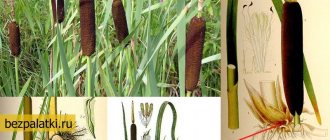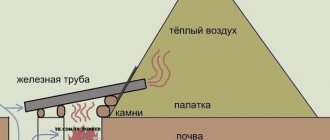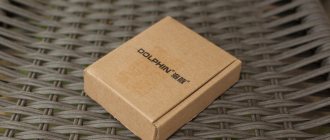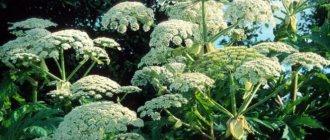Description
As soon as the spring sun shines, horsetail begins to sprout in the gardens, which is classified by our summer residents as a weed.
Horsetail likes to grow in acidic soil, this is a signal to start alkalizing the soil
The plant, which belongs to the higher spore species, has a height of 10 to 40 cm, its stems end in a spore-bearing pistil in the form of a spikelet, in which seeds - spores - are located. As soon as they are scattered, the stem dies and leaf development begins. They have a tetrahedral shape, a bright green tint, and branch well on the lower parts of the plant. Horsetail branches are directed upward, towards the sun.
The root system of the plant culture goes deep into the ground, almost a meter, this makes it easy to find food and water. Nodules in the form of balls are located on the roots, and substances that provide nutrition to the above-ground part accumulate in them.
This amazingly hardy crop can tolerate both low and high temperatures, light frosts and unbearable heat; it adapts to drought and thrives in rainy summers.
Horsetail likes to grow in sandy, acidic soil. If it once settled in your garden, we can assume that you have problems: firstly, it’s time to alkalize the soil and add ash or slaked lime, and secondly, a harmful weed has settled on your site, which will be quite problematic to get rid of.

There are several types of horsetail, but only one of them can be eaten and used as a medicine. Only a plant with branches pointing upward is healing. It is better not to touch the rest, otherwise the treatment may turn into an exacerbation of the disease. There have been cases when horses in villages died after eating the “wrong” horsetail contained in hay.
People call the plant by different names: field pine, nursery grass, honeydew, water pine, horsetail, morel, Sokhatin grass.
It is difficult to imagine that once upon a time, at the dawn of centuries, these plants looked like giant trees, which occupied a vast territory on Earth with powerful horsetail forests. It is thanks to them and giant ferns that today we have such a mineral as coal. Today we see only short and rather puny green bristles, which complement the fragrant meadow herbs.
The most dangerous is the marsh horsetail, which grows in swamps. It can be distinguished by its thick stem and few branches. Horsetail must not be confused with meadow horsetail; this can have a very negative impact on health.

Meadow and swamp horsetail contain poison, which causes the death of domestic and wild animals
Horsetails, wintering and others. The meaning of horsetails
Horsetail is distinguished by its appearance. Its branches usually do not rise up, but stick out to the sides and fall down. This is not a “pine”, but a “herringbone”.
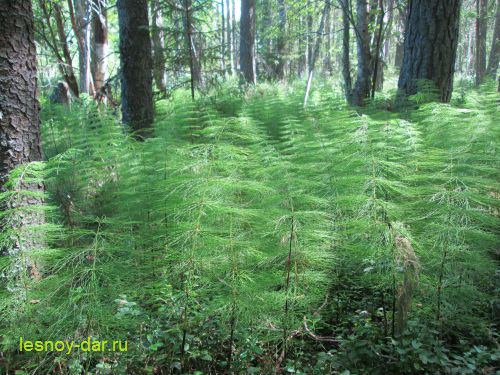
Horsetail
Vegetative and generative shoots of horsetail do not grow one by one, but almost simultaneously. Moreover, the generative shoots do not die after the spores mature. Soon after the appearance of spore-bearing spikelets, lateral green branches begin to grow on them, and the stem turns green. And soon they are practically no different (except for the unnecessary spikelet that dries up in the summer) from vegetative shoots.
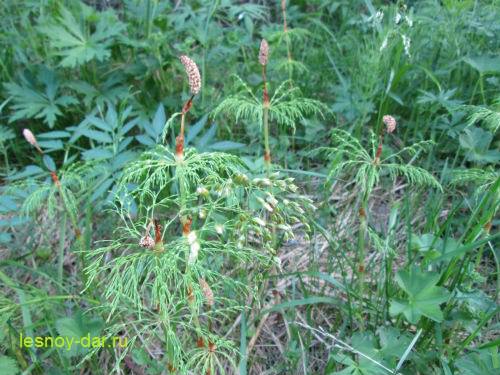
Generative shoots of horsetail
Wintering horsetail is the largest horsetail in European Russia. Its shoots can reach one and a half meters in height. The thickness of the hollow stem is from 5 to 8 mm. Rosettes of leaf teeth are clearly visible at the nodes. In summer, spore-bearing spikelets appear at the top. But lateral branches of this horsetail are rarely formed.
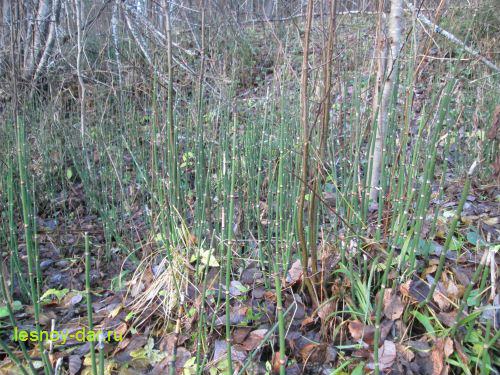
Horsetail overwintering
These slender, tall “canes” with green, jointed stems stand in damp areas of the forest, on floodplain terraces of rivers and streams, and on the slopes of ravines. The stems are also ribbed - silica crystals accumulate in them under the bark.
The shoots of wintering horsetail emerge green under the snow. They retain their green color even in winter. And in the spring, new shoots will appear to replace last year’s faded ones.

Horsetail overwintering in early spring
In European Russia, in its other regions, in the countries of Europe and Asia, marsh, meadow, and riverine horsetails also grow. There are many other species of these curious plants.
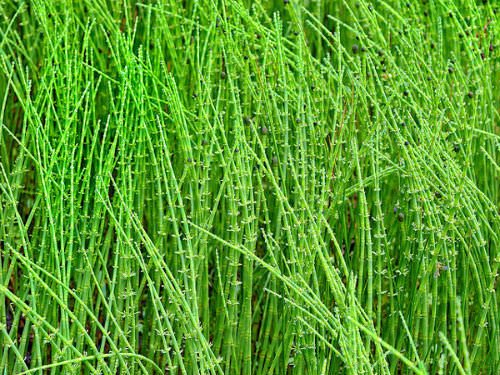
Horsetail
The word “horsetail” in Old Church Slavonic meant “tail”. Horsetails, due to the abundance of silica in them, are strong and whippy, like horsetails. It is curious that the Latin name of the genus - Equisetum - comes from words meaning “horse mane”.
Because of their rigidity and strength, horsetails were used for polishing wood, bone, and even metal. Which is not surprising, since silica is the substance that quartz is made of.
Horsetails are a food source for many herbivores. Rodents and hares feed on their shoots. Bears readily eat them. Wild boars like the stems and nodules. Elk readily “snack” on shoots of tall marsh horsetail. Bean geese nibble grass and dig up horsetail nodules.
There is evidence that horsetails can be dangerous to livestock, especially horses. But this information is quite contradictory. Most likely, some species may be dangerous, while others may be beneficial. Moreover, the impact may be different at different times of the year and in different regions.
You can read about this, for example, in the wonderful book by A.V. Smirnov “The World of Plants” (in 4 volumes). I would recommend this four-volume book to all plant lovers. Very informative and interesting!
There are also electronic versions of the book - you can either read them online on the Internet or download them to your computer.
I hope more interesting horsetails will appear on my blog. As well as new articles about other interesting plants. Therefore, I advise you to subscribe to the news and receive them in your inbox.
Best regards, Alexander Silivanov
Chemical composition
Horsetail contains many substances that are used in the pharmaceutical industry. Among them are:
- alkaloids;
- saponin equisetonin;
- flavonoids;
- aconitic, oxalic and malic acids;
- fatty and essential oil;
- silicic acid salts;
- tannins, resins;
- vitamins;
- carotene and others.
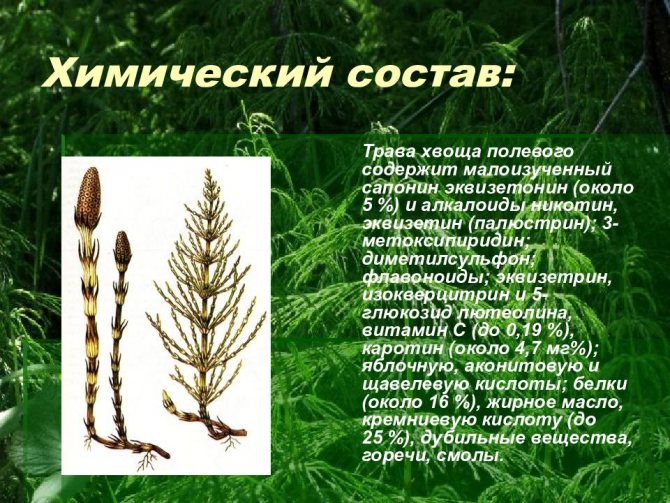
Useful properties of horsetail
Horsetail has been known for its healing properties since the time of Avicenna, the famous physician of antiquity, who mentioned it in his medical works as a remedy that effectively stops blood and cleanses the body of toxins and harmful substances.
In the 40s of the last century, the study of horsetail began in medical institutions around the world, after which the medical community proved the unconditional benefits of horsetail for human health.
In scientific works, horsetail looked like a panacea for many diseases of various types.
In fact, it is a strong antioxidant, antiexudative, diuretic and antifungal agent, and has an antispasmodic effect. The importance of the plant in the pharmaceutical industry can hardly be overestimated, since today many drugs are being created that are based on substances from its composition.

Common horsetail has become a real breakthrough in pharmacology and traditional medicine
Harm and contraindications
Absolute contraindications to taking drugs based on horsetail are:
- acute kidney inflammation, including glomerulonephritis;
- taking diuretics and antihypertensive drugs;
- pregnancy and lactation;
- uterine bleeding during or after termination of pregnancy.
Horsetail is a fairly powerful herbal remedy, which, if taken incorrectly and taken lightly, can cause a number of serious complications, including:
- dehydration;
- allergic reactions;
- formation of urate in the kidneys.
Do not neglect consulting a doctor before starting treatment with horsetail. There is also no need to treat horsetail as a panacea in the fight against excess weight - it is just an auxiliary method of stimulating metabolism. But using horsetail as an external remedy to strengthen hair and restore youthful skin is the right decision. The Russian Empress Catherine herself regularly took baths with this herb to preserve her beauty.
If you have your own horsetail-based attractiveness recipes, share them with our readers!
Healing effect
Doctors use preparations containing horsetail to treat urolithiasis and kidney disease. The power of its effect surpasses even kidney tea. But it should be remembered that medications based on it cannot be used for nephritis, since some substances are irritants to the kidneys.
When diagnosing diseases such as heart and pulmonary failure, edema, horsetail helps to effectively expel excess fluid from the body and thereby alleviate the patient’s condition.
Other properties:
- it has astringent property;
- stops inflammatory processes;
- removes lead and other heavy metals from the body;
- it significantly reduces blood sugar levels;
- in small doses it has a positive effect on the reproduction of collagen and bone tissue;
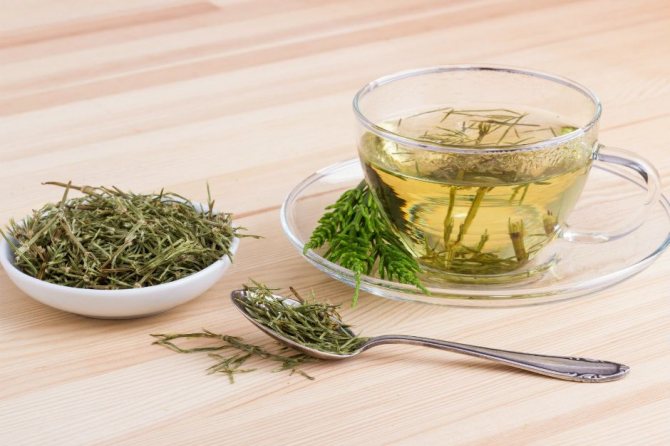
It is not recommended to use horsetail in large doses.
Recipes for various diseases
Adenoids
For this disease, a medicinal collection of horsetail should be used. The recipe is as follows: pour 2 tablespoons of the mixture into a glass of water and boil for several minutes. Cool the product and rinse the nasopharynx with it. Repeat the procedure twice a day for a week.
Atherosclerosis
A healing mix consisting of several medicinal plants will help here. You need to take one part each of horsetail herb, birch leaf, dandelion root, wheatgrass root, soapwort root, yarrow herb, chokeberry fruit, and corn silk. Mix the ingredients and pour a glass of boiling water, leave for half an hour, strain and drink 100 ml three times a day after meals.
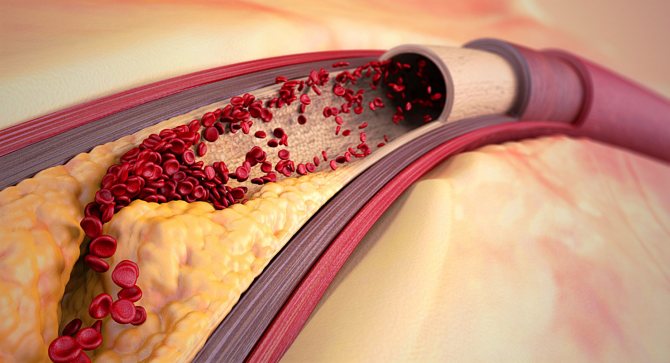
Vascular atherosclerosis
Arthritis
Pour a large spoonful of horsetail herb into a glass of hot water, wait half an hour and drink the infusion one glass a day.
Bronchiectasis
To treat pulmonary diseases, you will need a medicinal mixture, to which equal amounts of oregano herb, St. John's wort, and cinquefoil rhizome are added. To all of the above you should add knotweed and horsetail grass, but three times more than the rest of the grass. Pour two large spoons of herbal mixture into 400 ml of hot water and leave in a thermos for at least 20 minutes. Take the medicine half a glass a day.

Bronchiectasis
Glomerulonephritis
To collect you need to prepare:
- 4 parts each of St. John's wort and bearberry leaf;
- 3 parts each of horsetail herb, birch buds;
- 2 parts each of knotweed, corn silk, oregano, chamomile flowers.
Take four large spoons of the mixture and pour a liter of not hot water, let it brew for 12 hours, then boil for 5 minutes. Strain and take 200 ml on an empty stomach, gradually drink the rest throughout the day.
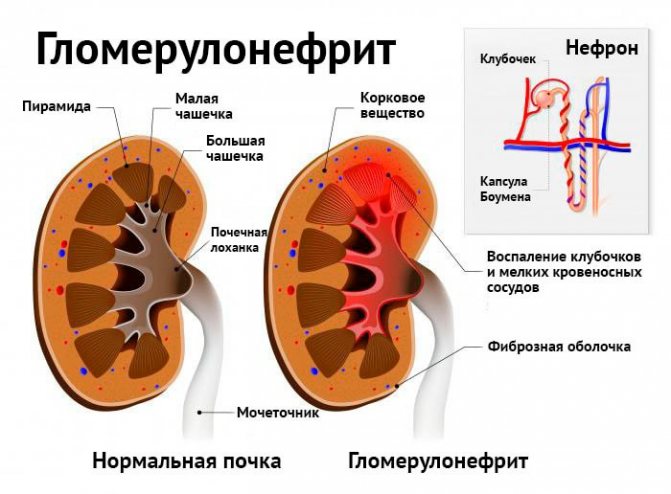
Haemorrhoids
For hemorrhoids, you can drink, make a poultice, and add a medicinal herbal mixture to the bath while bathing, consisting of three parts of oak bark, two parts of horsetail, one part of steelhead root, chamomile flowers and tansy. Pour half a liter of boiling water over 60 g of the mixture and leave for at least 4 hours. Drink 50 ml three times a day half an hour before meals.
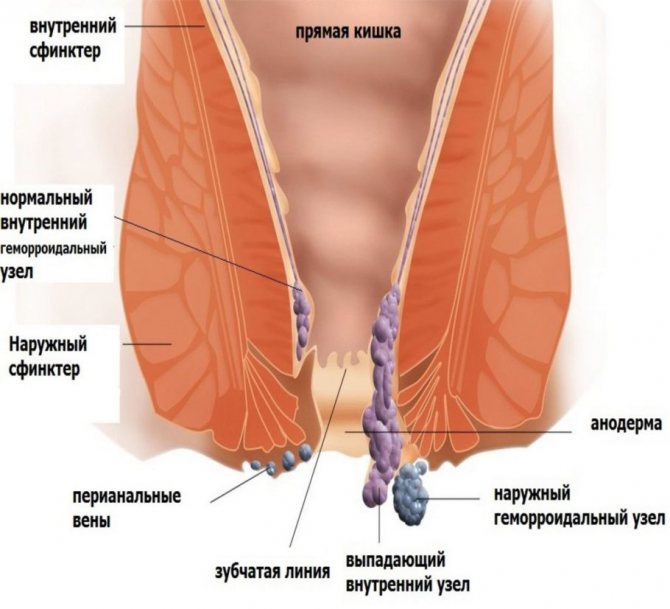
For bleeding, take 1 part of buckthorn bark, flax seed, chamomile, dried grass, horsetail, and knotweed. A tablespoon of the mixture is mixed with a glass of boiling water and kept covered for 20 minutes.
Drink 1/3 three times throughout the day.
Purulent wounds
Tea for lotions is made as follows: brew a handful of horsetail herb with 200 ml of boiling water, boil over low heat for 5 minutes and do the procedures in the form of lotions.
Cholelithiasis

The collection consists of two spoons of dry horsetail root, which must be poured with two glasses of hot water. Drink the mixture in small sips four times.
Urolithiasis disease
One of the most popular preparations during urolithiasis helps relieve pain and helps remove stones from the body. It is done like this:
1 part horsetail, lingonberry leaf, strawberry leaf, caraway fruit, juniper fruit, licorice root. The collection is infused in hot water for half an hour, then filtered through cheesecloth and taken half a glass four times a day.
Nephritis
An infusion of two spoons of horsetail and a glass of boiling water is prepared in a water bath for about 30 minutes, infused for about 15 minutes, then filtered and drunk once every two days, 100 ml.
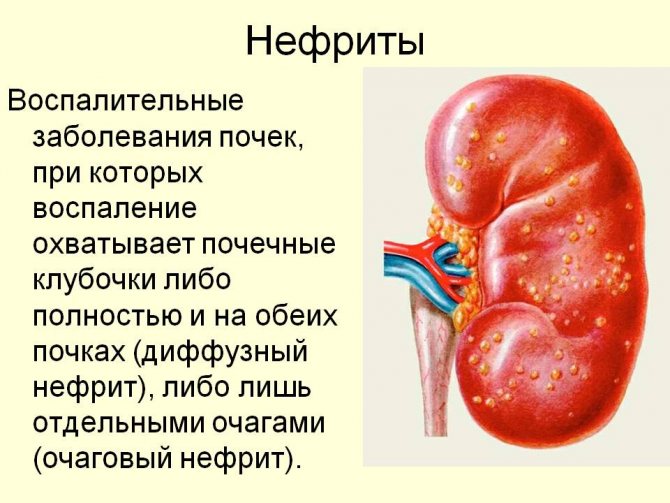
Pyelonephritis
Herbs such as horsetail, St. John's wort, violet grass, and motherwort are added to the collection in equal parts. Pour all ingredients into 200 ml of water and cook until tender for 25 minutes, drink in small portions throughout the day.
Psoriasis
Here you will need: celandine - 1 tsp, horsetail - 2 tsp, St. John's wort - 3 tsp, string - 3 tsp, black elderberry - 2 tsp, corn silk - 2 tsp, lingonberry - 2 tsp, calamus root - 3 tsp, elecampane root – 2 tsp.
Take the mixture in the amount of one tablespoon and pour hot water into a thermos in the evening. You can take the medicinal drink in the morning. Dose for psoriasis: 100 ml in the morning and before bed.
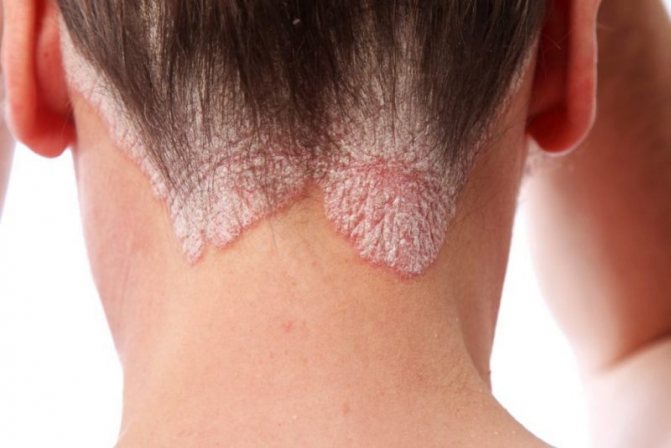
Seborrheic dermatitis
Washing the skin with dermatitis is carried out using a special medicinal infusion. It is prepared from a handful of dry grass and two glasses of boiling water. After the herb has infused, the liquid is filtered and procedures are performed.
Prostration
Horsetail tea is drunk several times throughout the day before meals; this remedy cleanses the body well.
Puffiness of the eyelids and eye fatigue
To relieve puffiness in the eyes and face, you can use the tea described above.
Acne
Horsetail and linden flowers must be taken in equal parts and mixed with boiling water. For procedures, use tampons soaked in liquid.

Cystitis
Several preparations are suitable for the treatment of cystitis.
- 1 recipe - during an exacerbation, tea made from dry herbs infused in boiling water will help.
- Recipe 2 – recommended for use in chronic forms of the disease. Here you can use both infusion and compresses. After the herb has been brewed and infused, it is placed in a bag made of canvas or linen and applied to the lower abdomen until the compress has cooled. At the same time, you need to drink a glass of infusion. After such treatment, the pain subsides and the disease gradually goes away.
- Recipe 3 - used for high levels of alkali in the urine and inflammatory processes in the bladder. You need to prepare a mixture of various herbs, taking them in equal parts. We take the leaves of horsetail, birch, bearberry, plantain, the roots of marshmallow, femur, licorice, and juniper fruits. After mixing all the ingredients, take a spoonful of the mixture and fill it with hot water. After prolonged infusion, strain and drink several times a day. Dose at a time – 1/3 cup.
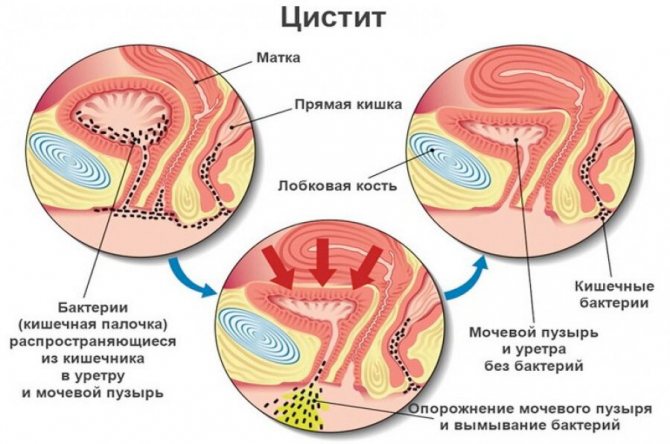
Eczema
For eczema, we prepare an infusion of horsetail, string, rose hips, calendula, oak bark, and blackberry leaves.
It is better to prepare the medicine in a water bath for 10 minutes, then leave it until it cools completely and begin treatment with lotions or wrapping the inflamed areas of the skin.
Notes
- Alekseev Yu. E. et al.
Herbaceous plants of the USSR. B 2 t / Rep. ed. Doctor of Biology Sciences Rabotnov T. A. - M.: Mysl, 1971. - T. 1. - P. 185-186. — 487 p. — 60,000 copies. - According to the GRIN website (see plant card).
- ↑ 1 2 3 4 Blinova K. F. et al.
Botanical-pharmacognostic dictionary: Reference. allowance / Ed. K. F. Blinova, G. P. Yakovleva. - M.: Higher. school, 1990. - P. 252. - ISBN 5-06-000085-0. - Plant resources of Russia and neighboring states, 1996, p. 9.
- ↑ 1 2 3 4 Gubanov I. A. et al.
Wild useful plants of the USSR / resp. ed. T. A. Rabotnov. - M.: Mysl, 1976. - P. 30-31. — 360 s. — (Reference books for geographers and travelers). - ↑ 123
Plant resources of Russia and neighboring states, 1996, p. 12. - Pankratova
G. Diseases of roses. Archived from the original on May 13, 2012. - Plant resources of Russia and neighboring states, 1996, p. 9-11.
- Gubanov I. A. et al.
Wild useful plants of the USSR / resp. ed. T. A. Rabotnov. - M.: Mysl, 1976. - P. 22. - 360 p. — (Reference books for geographers and travelers). - ↑ 12
Plant resources of Russia and neighboring states, 1996, p. eleven. - Plant resources of Russia and neighboring states, 1996, p. 11-12.
Using horsetail at home
With the help of healing remedies and preparations made with your own hands at home, you can stop the development of many diseases, which include: rheumatism, chronic forms of tuberculosis, hypertension, ailments associated with the visual, hearing, and urinary organs.
Substances and extracts from horsetail are included in the well-known Traskova mixture for the treatment of asthma.

Infusions of horsetail can be used to treat stomatitis, tonsillitis, and make healing baths for eczema, ulcers and wounds, fistulas and seborrhea
Pharmacy drugs
Today, the pharmacological industry widely uses horsetail for the manufacture of various medications with anti-inflammatory, disinfectant, astringent, diuretic, and hemostatic properties.

Phytolysin paste, known in medicine, contains horsetail; it is used for kidney diseases as a medicine for internal use.
Decoctions, infusions, teas, alcohol tinctures and ointments, all of these products are widely used in home pharmacies. To prepare them, you do not need a prescription from a doctor; you can collect the medicinal material yourself and make a natural medicine at home.
You just need to not be lazy, put your grandfather aside and go to the forest, to the field, to those places where the “green medicine” grows. To do this, it is better to choose sunny, windless weather. This way you can simultaneously take a walk that is beneficial for your well-being and stock up on valuable medicinal raw materials.
Cosmetology
In the field of cosmetology, horsetail occupies one of the leading places; with the help of modern developments in this industry, liquid extracts and extracts have been obtained from the plant to help care for facial skin and hair.
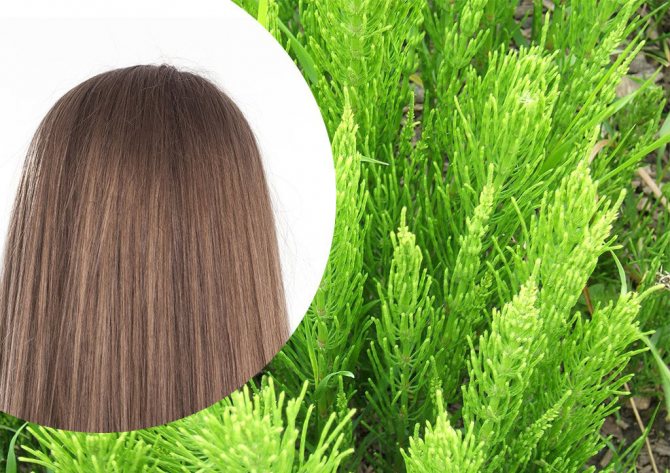
It is enough to apply a hair mask once a week to make it look silky and healthy. You can prepare the mask yourself or buy it at the pharmacy.
For those who prefer to make cosmetics with their own hands, we publish the recipe:
Take 4 tbsp. l. spoons of vegetable or olive oil, heat it until hot, add dry horsetail herb (2 tablespoons) into it and leave for several hours.
It is better to use the mask at night, wrapping your head in cellophane and a towel. This mixture can also improve your facial skin if you use it at least twice a week.
How it is used in healthy and therapeutic nutrition
Young horsetail shoots, similar to candles or spikelets, are recommended to be added to the dishes of those who are sick:
- urolithiasis;
- diabetes mellitus;
- gout;
- diseases of the joints and spine associated with connective tissue dystrophy.
Horsetail grass, due to its diuretic properties, is used in the fight against excess weight. Decoctions, tinctures, herbal teas, and extracts used for this purpose should not be drunk for more than a month. At the same time, it is imperative to increase your drinking water consumption to avoid possible dehydration.
Reviews on the use of horsetail for weight loss
What does horsetail go with?
In cooking, only young candle-shaped shoots of horsetail are used. In terms of their taste, they resemble potatoes - and they are used in a similar way to this vegetable: when boiled, they are added to salads, soups, casseroles, pies and pancakes as a filling. It is best to combine horsetail with other vegetables and herbs, eggs and unleavened dough.
In folk medicine, horsetail is often used as a component of medicinal preparations. It is recommended to combine horsetail with the following medicinal plants :
- with hawthorn for hypertension;
- with coltsfoot for bronchopulmonary inflammation;
- with chamomile and (or) aloe for external use for skin and hair diseases;
- with birch leaves and buds, buckthorn, flax seed for excess weight;
- with nettle, mint, adonis, anise, fennel and pine needles - for asthma;
- with bearberry for pyelonephritis;
- with yarrow and garlic for atherosclerosis.
Horsetail contraindications
Among the few contraindications there are restrictions for the following risk groups:
- pregnant women and nursing mothers;
- patients with severe forms of kidney disease, such as nephritis and nephrosis;
- persons who have individual intolerance to substances contained in the plant.
Any medicinal plant should be used with caution and you should consult your doctor before use.

Only a specialist has the right to prescribe this or that treatment related to dosages and medications.
Literature
- Safonov N. N.
Medicinal plants of the meadow. - M.: Fine Arts, 1993. - P. 56-57. - Gubanov I.A. et al.
27.
Equisetum arvense
L. - Horsetail // Illustrated guide to plants of Central Russia. In 3 volumes - M.: Scientific T. ed. KMK, Institute of Technology. research, 2002. - T. 1. Ferns, horsetails, club mosses, gymnosperms, angiosperms (monocots). - P. 101. - ISBN 8-87317-091-6. - Petukhov A.V., Kordyukov A.V., Baranchuk-Chervonny L.N.
Atlas of vascular plants in the vicinity of Yuzhno-Sakhalinsk. - Yuzhno-Sakhalinsk: Akon, 2010. - 220 p. — 1500 copies. — ISBN 978-5-904209-05-6. - Part I - Families Lycopodiaceae - Ephedraceae, part II - Additions to volumes 1-7 // Plant resources of Russia and neighboring states / resp. ed. A. L. Budantsev; Bot. Institute named after V. L. Komarova RAS. - St. Petersburg: Mir and Family-95, 1996. - P. 9-12. — 571 p. — ISBN 5-90016-25-5.
Other uses
It is commonly believed that the succulent stems and leaves of the plant are used only for medicinal purposes, but this opinion is erroneous. Since the juicy spore-bearing spikelets contain a lot of sugar, horsetail can be eaten.
The stems are consumed raw, used in the preparation of fresh salads, soups, pies, and added to omelettes and casseroles. Some housewives even salt horsetail shoots for future use. In addition to the shoots, the roots of the plant, which are famous for their high starch content, are also used.

In agriculture, this valuable plant crop is grown for livestock feed. Field horsetail is safe for animals; it does not contain toxic substances, unlike the meadow and swamp species. There is an opinion that the plant increases milk production, and in the northern regions it is called “milk feed.”
Still, it poses some danger to horses, so attentive owners try not to give it to their pets. Rural residents who have pets treat their pets for wounds and ulcers with horsetail powder.
Horsetail also found use in everyday life; its tough stems were used when it came to cleaning smoked dishes and polishing wood and stone.
Distribution and habitat
The plant is distributed in the subarctic, temperate and tropical regions of Eurasia from Iceland, Great Britain and Portugal in the west to Korea and Japan in the east, throughout North America, from subarctic Canada and Alaska to the southern states of the USA[2].
In Russia, it is distributed everywhere except deserts and semi-deserts, as well as the Far North[3].
In the mountains it reaches the subalpine zone. It grows in forests, on upland, floodplain meadows, the edges of swamps, pebbles, sandbanks, fields, pastures, along the banks of rivers, streams, irrigation ditches, and is often a weed [4]. Prefers sandy, fairly rich, moderately moist soils. In water meadows and fallow lands, it often dominates the grass cover alone or together with grasses - creeping wheatgrass, awnless brome, red fescue, etc. It is especially common in the floodplains of northern rivers[5].
Features of the workpiece
Horsetail can be harvested throughout the season, using shoots or stems. The best time to collect raw materials is mid-summer - July and August.
The collected material must be dried in a dry and ventilated place. At humidity not higher than 13%. A shed or attic space is suitable for this purpose.
The finished dry mixture has a faint, barely perceptible, peculiar odor and a sour taste. It is better to store the dry mixture in fabric or paper bags for no more than 4 years.
X
Collection and procurement of raw materials
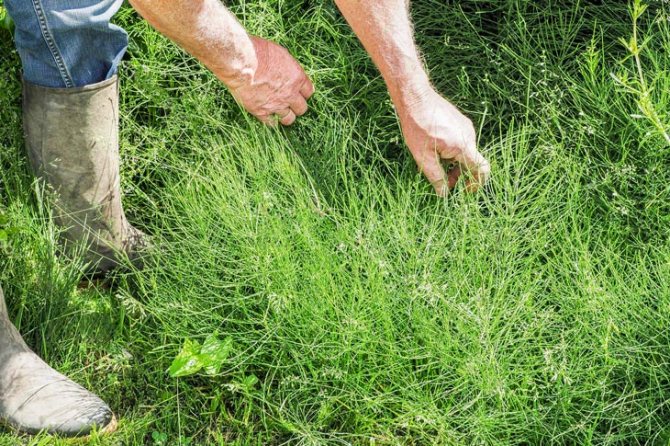
The beginning of summer is the time to collect grass. Green shoots stretched out and absorbed useful substances. It is imperative to make sure that the grass being harvested is horsetail and not its other species. Horsetail is collected in dry weather. In the morning, when the dew has disappeared, you can cut off the green shoots. The cut should be 5-6 cm above the soil surface.
You need to dry it in the shade or in a well-ventilated area, spreading the grass on a “breathable” surface. It is not recommended to wash the grass before drying.
Drying lasts 7-10 days. Dry, brittle horsetail stems are stored in a paper bag or linen bag.
